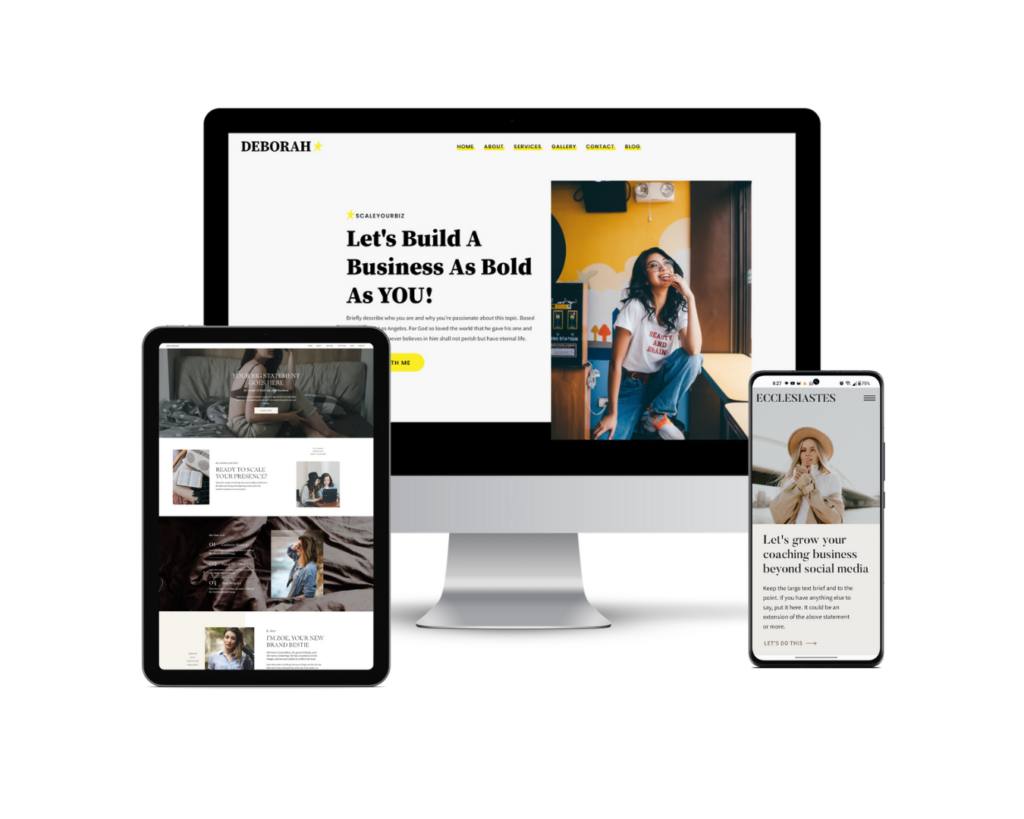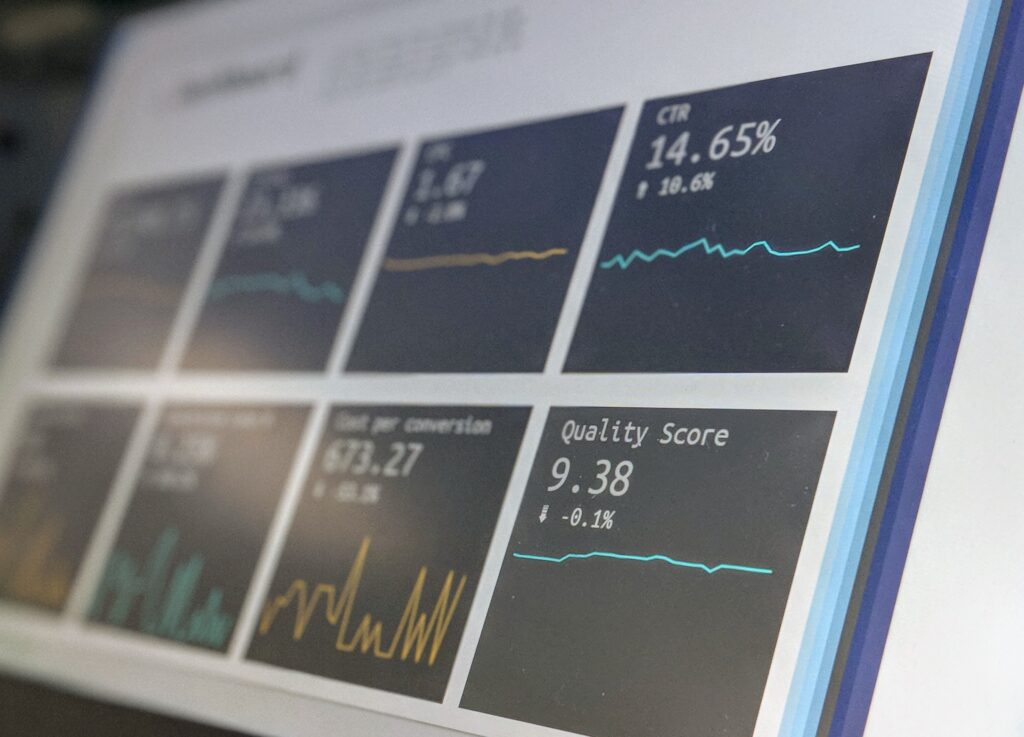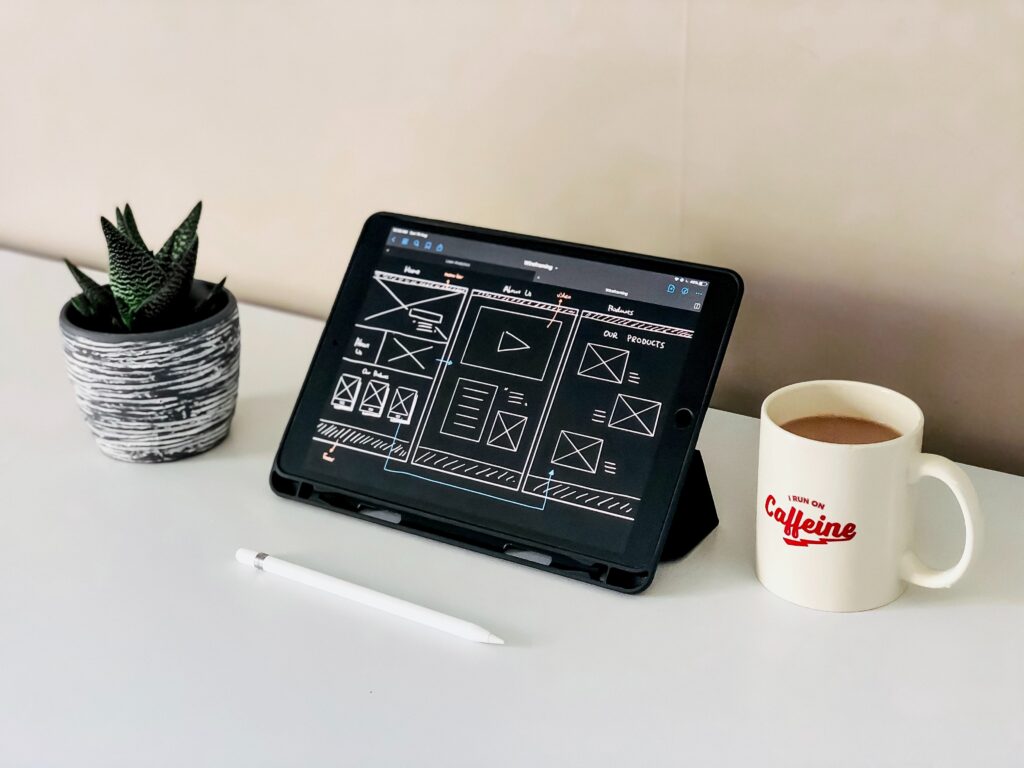Thank you for reading!
If would you like us to create a high-converting website for you, Click here.
Website design has a big impact on how customers feel when they visit your site. If it’s designed well, your site becomes user-friendly, helping customers find what they need. But if it’s poorly designed, it can be frustrating and give a bad user experience.
In this article:
So let’s start by thinking of the internet as a gigantic shopping mall, and websites are like the shops in it. When you walk into a beautiful, well-arranged store, you’re likely to stay and enjoy your visit. Websites work the same way. But have you ever wondered how they do that? In this blog post, we’ll explore how the way websites are designed can affect your experience when you’re online.
Imagine you click on a website, and it looks amazing. The colors and layout are pleasing to the eye, and everything is easy to find. Even though you might not realize it, this good first impression matters a lot. It’s like when you walk into a tidy and welcoming room – you feel comfortable. This is how the appearance of a website, called its design, can grab your attention and make you want to explore it further.
Website design also helps you move around a website. It’s like having a map when you’re exploring a new place. A well-designed website makes it easy for you to find what you’re looking for, just like signs in a mall help you find your way. But if a website is confusing, like a mall with no signs, it can be frustrating. So, website design isn’t just about making things look nice – it’s about making your online journey smooth and enjoyable. In this blog post, we’ll dive deeper to understand how different aspects of website design, like how fast a website loads, how information is shown, and even how trustworthy a website looks, can make a big difference in your online experiences.
So, let’s check out how your website design affects user experience and how you can improve it.

Section 1: The Visual Appeal
The Power of First Impressions
Imagine stepping into a beautifully decorated room versus a cluttered, chaotic one. The visual appeal of a website works in a similar way. When you land on a site with a clean layout, appealing colors, and well-organized content, it instantly grabs your attention and makes you want to stay. On the other hand, a poorly designed website with a confusing layout and an overload of information can drive you away within seconds.
Navigation and Intuitiveness
Website design also heavily influences how easy it is for you to find what you’re looking for. A well-designed navigation menu guides you effortlessly through the site, helping you locate the information or products you need. Conversely, a complicated or cluttered menu can leave you frustrated and eager to leave. Intuitive design choices, like clear labels and logical page structures, enhance your user experience by reducing confusion and stress.
Mobile-Friendly Design
In today’s mobile-centric world, responsive design has become crucial. A mobile-friendly website adapts seamlessly to different screen sizes, ensuring that whether you’re on a desktop, tablet, or smartphone, your experience remains consistent and user-friendly. Websites that neglect mobile optimization risk alienating a significant portion of their audience.

Section 2: Loading Speed Matters
The Need for Speed
Have you ever abandoned a website because it took too long to load? You’re not alone. Website design has a significant impact on loading times. Bloated, overly complex designs with large, unoptimized images can slow down a site’s performance. In contrast, streamlined, efficiently designed websites load quickly, keeping your attention and preventing you from hitting that back button.
Mobile Optimization
Mobile users, in particular, are sensitive to slow loading times. If your website design isn’t optimized for mobile, it can lead to frustratingly slow loading speeds on smartphones. This not only annoys users but can also negatively impact your search engine rankings, as search engines prioritize fast-loading websites.
Keeping Users Engaged
Website design also affects how long users stay on your site. If your pages load quickly and the design is engaging, visitors are more likely to explore further. This extended engagement can lead to a deeper connection with your content or products, increasing the chances of conversion.

Section 3: Content Presentation
Readability and Clarity
The way content is presented on a website plays a pivotal role in user experience. Design elements such as font size, spacing, and contrast significantly impact the readability of text. Websites that prioritize clear and legible text make it easy for users to consume information without straining their eyes.
Visual Hierarchy
Effective website design employs a visual hierarchy to guide users’ attention. This hierarchy uses size, color, and positioning to emphasize essential elements and direct users’ focus. When done right, it ensures that users can quickly grasp the most critical information on a page.
The Role of Imagery
Images and multimedia elements also contribute to user experience. Well-chosen visuals complement the content and engage users. However, overloading a page with images can slow down loading times. Striking the right balance is crucial for an optimal experience.

Section 4: Trust and Credibility
Design’s Influence on Trust
Website design is instrumental in conveying trust and credibility. Users are more likely to trust a site with a polished, professional design. Elements like a secure payment gateway, clear contact information, and professional branding reassure users that your site is reliable.
Consistency and Branding
Consistency in design across your website reinforces your brand identity. When users see the same colors, logos, and design elements on every page, it creates a sense of cohesion and familiarity. This, in turn, boosts their trust in your brand.
Accessibility Matters
An often-overlooked aspect of website design is accessibility. A website that’s accessible to all users, including those with disabilities, demonstrates a commitment to inclusivity and can enhance your reputation as a socially responsible brand.
Final Thoughts: How Website Design Affects User Experience
Website design is not just about aesthetics; it’s a fundamental component of the user experience. From the visual appeal and navigation to loading speed, content presentation, and trust-building elements, every aspect of design shapes how users perceive and interact with your site. By prioritizing user-friendly design choices, you can create a digital environment that captivates, informs, and converts visitors, ultimately leading to a more successful online presence.
In the end, it’s clear that how websites are designed really matters. Whether you’re shopping, reading, or looking for information online, the way a website looks and works affects your experience. A well-designed website is like a friendly and helpful guide, making your online journey enjoyable and easy. It’s not just about looking good; it’s about making things work well for you.
So, the next time you’re navigating the web, take a moment to appreciate the thought and effort that goes into website design. And remember, a good website doesn’t just show you what you want; it also helps you find it quickly and makes you feel comfortable, just like a well-arranged store or a helpful map in a big mall. Website design is the key to a better online world.
At Miranda Ruiz Studio, we understand the significance of how website design affects user experience, and we know how to create a stellar experience for your visitors. Our 4-phase rebranding and website design process isn’t just about making things look nice – it’s about crafting a digital space that truly connects with your ideal clients.
We believe in the power of user-friendly websites that not only look great but also help you achieve your business goals. Just as we’ve explored in this blog post, a well-designed website can be your key to attracting the right audience, enhancing your brand’s credibility, and providing an exceptional online journey.
So, if you’re ready to take your online presence to the next level, we’re here to deliver personalized advice and support, tailored to where you are in your business journey.
Let’s make your website design work for you! Click HERE to start your experience!
Related Articles:
How Website Design Affects User Experience
category